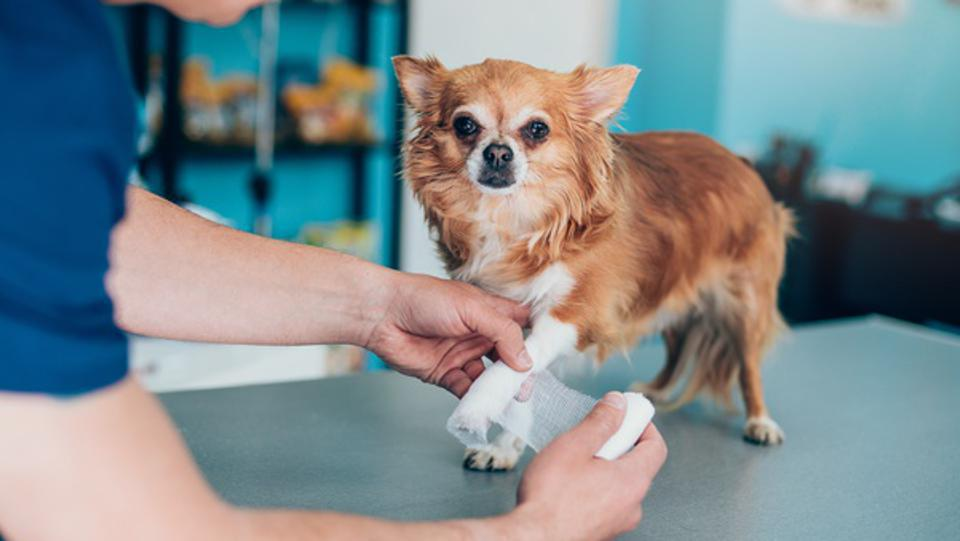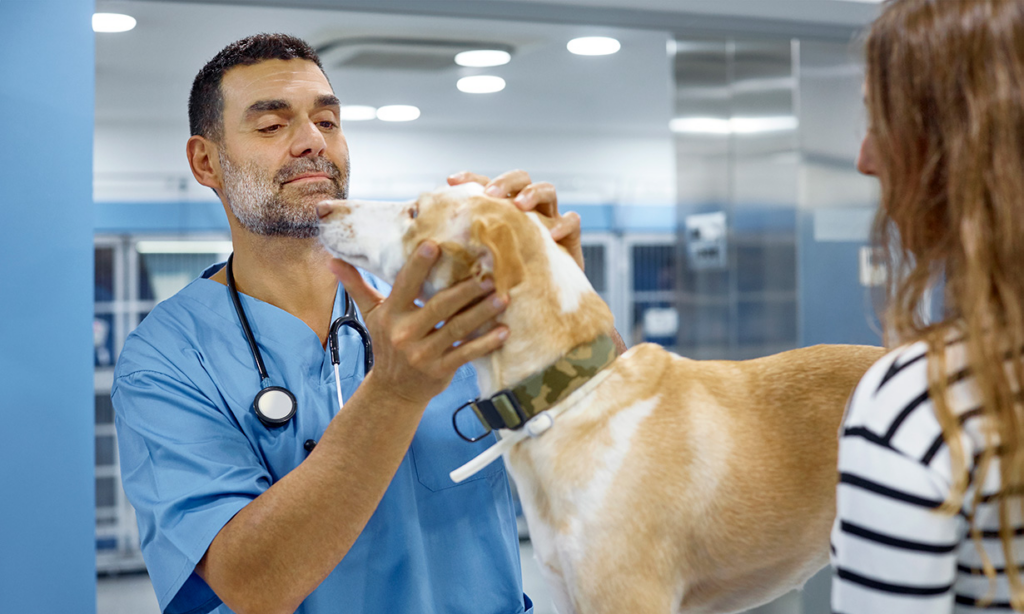Pet insurance helps to pay for veterinary treatment for your pet so you can concentrate on getting them on the road to recovery. Veterinary care can be eye-wateringly expensive but most cats and dogs will need treatment for an illness or injury at some point in their life. Horses might need to have a vet called out to them, which will increase costs, and even smaller animals like rabbits can be surprisingly costly to treat.
It’s difficult to think about your animals being hurt or unwell, but you need to ask yourself: what would you do if you were faced with a vet bill for hundreds or thousands of pounds a year?
Growing demand for pet insurance market policies and rise in need for financial safety in case of surge in uncertainties boost the growth of the global pet insurance.
In addition, surge in number of veterinary centers positively impacts the growth of the market. However, lack of awareness regarding pet insurance policy and high premium cost hampers the market growth.
Is pet insurance expensive?

As with any insurance, you’ll want to weigh the cost of the insurance over time against potential payouts. But pet insurance doesn’t have to break the bank, like human health insurance does.
For example, for a pet insurance plan with a $5,000 maximum yearly payout for a Chihuahua puppy, we saw prices as low as $21 a month from Lemonade and Pets Best.
Note that the pet insurance price you pay when your pet is a puppy or kitten will generally increase each year when you renew the policy.
Growing demand for pet insurance market policies and rise in need for financial safety in case of surge in uncertainties boost the growth of the global pet insurance. In addition, surge in number of veterinary centers positively impacts the growth of the market. However, lack of awareness regarding pet insurance policy and high premium cost hampers the market growth (see How InsurTech Can Help Insurers Optimize Pet Insurance Industry?).

Some carriers have different levels of coverage for the customer to choose from, while other carriers have one-size-fits all type plans. Most pet insurance companies exclude pre-existing conditions and hereditary or congenital conditions. Some insurance companies will not accept pets after a certain age and many companies have waiting periods before benefits begin.
What does pet insurance cover?
It depends on the type of policy you go for, but as well as veterinary treatment for accidents and/or illnesses policies often include:
- Third-party liability (dogs only)
This pays the legal costs if your dog’s responsible for hurting someone or causing damage – for example, if they ran into a road and caused a car to swerve and crash.
Cats are considered ‘free spirits’ by law so cat insurance doesn’t include third-party liability. - Some alternative therapies
If your vet recommends something like hydrotherapy or acupuncture for your pet, some pet insurance policies will cover these treatments.
You usually won’t be covered for anything that you’re not referred for by your vet. - Diagnostic costs for illnesses, like blood tests
The cost of working out what’s wrong with your pet is covered.
Diagnostic testing can be quite expensive and some policies will put a limit on the amount they’ll reimburse per test. If your vet’s lab charges more for diagnostics you’ll have to make up the shortfall yourself. - Advertising costs to find lost pets
Most pet insurance policies include some cover for the cost of making posters and putting up advertising for your lost pet. Some will even cover a reward.
If your cat or dog sadly can’t be found your policy might also offer some compensation. - Euthanasia
At the end of your pet’s life, most pet insurance policies will cover the cost of a vet putting them to sleep if it’s necessary and to prevent further suffering.
What does pet insurance not cover?
Pet insurance is for the unexpected, not routine treatment, so there are a few things that are usually excluded:
- Vaccinations and routine vet check ups, or preventative treatment
You’ll have to pay for vaccinations and check ups for preventative medicine like flea and worm treatments yourself. - Neutering and pregnancy
Pet insurance won’t cover the cost of having your pet castrated or spayed. You’ll also have to pay costs for treatments needed because of your cat or dog becoming pregnant, or giving birth. - Pre-existing conditions
Pet insurance usually doesn’t cover any health issues your pet was showing signs of before you took out the policy.
If they first become ill while you have lifetime pet insurance, they’ll continue to be covered for that treatment as long as you keep renewing the policy. - Dental treatment
Looking after your pet’s teeth with a scale and polish or extractions is rarely covered by pet insurance. Although most policies will cover emergency dental work for injuries caused by an accident. - Cremation and burial costs
Although euthanasia is covered by pet insurance in some circumstances, you’ll usually have to pay for burial or cremation costs yourself.
Dog insurance

Dog insurance can help cover, or contribute towards, the cost of healthcare if your dog falls ill or gets injured. Vets bills can quickly get expensive, particularly if you have a larger, older dog.
If your dog has a recurring health problem, that you want cover for, you can get a policy with cover for pre-existing conditions. Some policies offer additional cover too for things like third party liability, dental care and travelling abroad. But you’ll usually have to pay extra for them.
Types of dog insurance policies

Accident-only
Accident-only insurance covers your dog for treatment needed because of an accident. It’s usually the cheapest option, but it might not be suitable if you’re concerned your dog could develop a medical condition – and want cover for it. Any pre-existing conditions are also excluded.
Time-limited
With a time-limited policy, you get a set amount of money towards treatment for an illness or injury, and a set time period for cover – usually 12 months.
You’ll max out the benefit when you reach either the cost limit or the time limit – whichever comes first. If your dog gets ill halfway through a policy, you’d have to renew to get the full 12 months of cover.
‘Recurring conditions’ aren’t covered. So, if your pet gets an ear infection, and then another infection in the other ear – that could be in the 12-month period, or after you renew – it won’t be covered. Any pre-existing conditions aren’t covered
Maximum benefit
These policies pay out a set amount in your dog’s lifetime for each illness or injury. When you reach the limit, the insurer won’t pay out anymore.
That means, if your pet’s issue becomes chronic, or reoccurs after you’ve reached the fixed amount of money, you’ll have to pay for any further treatment.
There’s no time limit. As long as you’ve still got your policy – and haven’t hit the maximum benefit yet – you can claim. Just like a time-limited policy, ‘recurring conditions’ aren’t covered.
Lifetime (annual limit)
Lifetime policies cover your dog for new illnesses and injuries. Any pre-existing condition they have before you take out the policy aren’t covered. But, if they develop one when you’ve got the policy in place, and you keep it, they will be covered.
This is the most extensive cover you can get, but it’s also the most expensive.
There’s a maximum benefit for each illness or injury. But, unlike maximum benefit, it resets every year you renew the policy.
Moreover, care and concern for pets, especially dogs, marks the successful transition of Indians from pet owners 10 years ago, to pet parents now.
With higher disposable incomes in developing countries like India, more people are now willing to spend on additional things like pets and their healthcare.
Also, countries in Europe such as U.K, Poland, France are noted to have some of the highest population of pet dogs and that will attract more pet owners to opt for various policy coverage. Thus, the counties with high population of dogs as compared to other companion animals is expected to create a lucrative opportunity for the pet insurance market expansion.
Cat insurance

Cats are a lot harder to train than dogs, and they can be unpredictable. That can lead to accidents, illnesses or injuries – which means unexpected vet bills for you.
If your cat has a recurring health problem, it can be covered by a pre-existing conditions policy, as long as it hasn’t had any symptoms for 24 months.
How much is cat insurance?
It really depends on the age, size, breed and health of your cat, plus your own personal information like your address.
A young, fit moggy living at a postcode well away from busy roads is likely to pay less than an elderly Persian in a built up city location. Find out more about how your pet insurance price is affected by where you live, and the cost of insuring older pets.
To find out exactly how much your cat will cost to insure, you’ll need to get a quote – it only takes a few minutes.
Horse insurance

The type of horse insurance you’ll need depends on your own circumstances and the level of cover you want. It depends on your horse’s age, breed and what you do with them, whether that’s riding, driving, work or showing.
For example, if your horse’s breed is prone to certain medical conditions you might want to find a policy with adequate veterinary cover for that condition, just in case they’re diagnosed in the future.
There are a few cover options to choose from:
Standard cover
A regular horse insurance policy will usually cover one aspect as standard, say the vet fees, and then offer a range of optional extras you can add to your policy, like cover for death, straying or theft.
You can get cover for your own horse or for one you have on loan. It’ll also usually cover your family for riding your horse.
But if you ride other horses that don’t belong to you, you might want to think about a rider policy.
As with all pet insurance, you need to think about the level of cover that’s right for you and your horse and check you can afford to pay the excess if your horse does need treatment.
Standard cover usually has age limits, for example for foals as young as 30 days, up until your horse is 20 years old.
Cover for older horses
You can get vet fee cover for injuries for mature horses aged 20 years and over – just check if there are any maximum age limits on your policy.
Make sure you read your policy carefully to see how much it’ll pay out if your horse is injured or dies before you decide whether to insure your older horse.
Just like with standard cover, you can choose some optional extras for mature horse insurance.
Horse rider cover
Rider insurance includes cover for personal accident and dental fees, third party liability and custodial liability as well as emergency vet fees if you have an accident while riding a horse.
Rider cover might have an age limit, say 18 to 75 years old, but you can also get young rider insurance for children. These policies will probably have age limits too, usually between five and 18 years old.
Any pre-existing conditions that you or your horse have won’t be covered.
Regardless of which cover type you choose, always check the terms to make sure you’re covered in the way you expect.
Rabbit insurance

Rabbit insurance can be valuable cover to have in place to protect your beloved bunny in a time of need.
Rabbit insurance can help you with the cost of vet treatment if your rabbit gets injured or ill. Treatment can be expensive without pet insurance, so make sure you’re comfortable with how much cover you’ll have.
Do rabbits need insurance?
It’s a common misconception that rabbits are easier and cheaper pets to look after. But they can fall ill or get injured just like any other animal. In fact – depending on the treatment – vet fees for rabbits can be more expensive than those for a larger pet. This is because smaller animals are tricky to operate on.
If you couldn’t afford vet care should your rabbit need it, then the right rabbit insurance policy could help out with this.
Some policies only contribute to the cost of vet fees. This means you could end up paying more in premiums than your insurer pays out to cover the treatment.
Only you can decide whether it’s worth getting insurance for your rabbit. You’ll have to weigh up the cost of premiums against the amount of vet fees cover you’d get to see if it’s worth it.
How much does rabbit insurance cost?
It varies, but factors that contribute to the cost include:
- Your bunny’s age – the older your pet, the higher the risk of it needing treatment
- Its breed – some breeds are prone to certain conditions
- Where you live – areas with higher vet fees will mean higher premiums
- Whether they have any medical conditions already
What does rabbit insurance cover?
As well as vet fees, rabbit insurance usually includes boarding fees for your bunny if you’re taken to hospital. Some insurers also contribute towards the cost of finding your lost or stolen rabbit.
Check the policy summary, or contact the insurer to confirm what’s covered, if you’re not sure.
What exclusions are there on rabbit insurance?
Most policies only cover you for unforeseen illnesses. If your bunny has a pre-existing medical condition, your insurer wouldn’t cover you for treatment related to it. To get cover for this, you’d need to take out a policy that includes pre-existing conditions, which will be expensive.
Costs for routine treatments like vaccinations, spaying/neutering, worming or flea treatments also aren’t covered. It’s common for dental problems to be excluded too. Illnesses preventable by getting your rabbit vaccinated aren’t included either.
Pet treatment costs

The cost of treatment varies, depending on the type of injury or illness, whether it’s a chronic condition, the breed of your cat, where you live and which vet you use. But you could be looking at a bill in the thousands of pounds for broken bones or pet hospital stays – could you afford to pay that yourself?
Pet insurance can cover a large part of the cost. The type of pet insurance you choose will depend on how much you can claim for, and how long.
For example, a fractured leg means expensive x-rays, surgery and physiotherapy, which would be covered by a time-limited policy.
But this could easily lead to longer-term costs: more surgery for the removal of stabilising pins and treatment for joint stiffness or lameness resulting from the original fracture – if that continued for more than 365 days, your time limited policy would stop paying out, but you could continue to claim on a lifetime policy, as long as you keep renewing it.
As your pet grows older, your pet insurance costs will probably increase. But so does your pet’s chances of needing to see a vet for an illness or injury.
Edited by 








